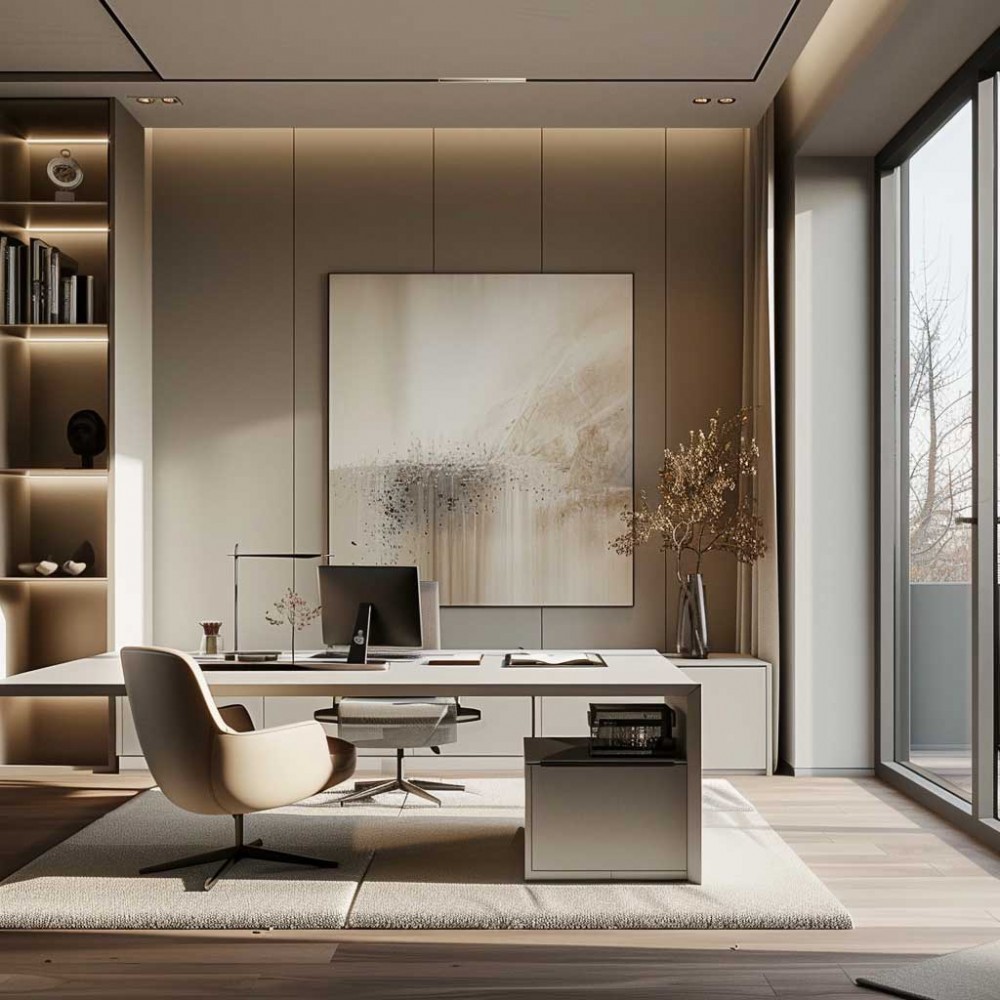Essential Considerations in Home Office Design

Essential Considerations in Home Office Design
In home office design, the location of the space is crucial. A quiet, well-lit area should be preferred. In a location where natural light is sufficient, especially a desk placed parallel to the window, ensures the most efficient use of daylight. Additionally, artificial lighting in the room should be designed to prevent eye strain. Along with general ceiling lighting, adjustable light sources such as desk lamps, which enhance focus, should be used.
Choosing the right desk and chair is essential for creating an ergonomic workspace. The desk height should be around 72-75 cm, and its width should be determined according to the equipment used. The chair should offer lumbar support and be comfortable for long periods of sitting. Adjustable backrests and armrests increase comfort and enhance productivity.
Storage solutions are critical for maintaining an organized workspace. Bookshelves, drawer cabinets, and open shelving systems allow easy access to necessary materials while maintaining visual order. Keeping only the daily used equipment on the desk helps prevent clutter and improves focus.
Material selection is one of the key factors that influence both durability and aesthetic appeal. Wood is one of the most preferred materials for home offices, as it creates a warm and natural atmosphere. Solid wood, MDF-lam, or natural veneer options may vary depending on the space's character and budget. Solid wood provides a durable and high-quality surface, while MDF or laminate options offer more budget-friendly alternatives.
Colors and textures directly impact the atmosphere of the office. Lighter shades create a sense of spaciousness, while darker colors can provide a more classic and sophisticated ambiance. Matte varnishes or water-based paints that highlight the natural texture of wood can be preferred for both aesthetics and durability.
Finally, personal touches are important in a home office design. Inspirational paintings, plants, and minimal decorative objects can add warmth to the space while boosting motivation. Plants improve the air quality, creating a healthier workspace. A well-designed home office becomes a space that supports the user by providing an efficient and comfortable working environment.
